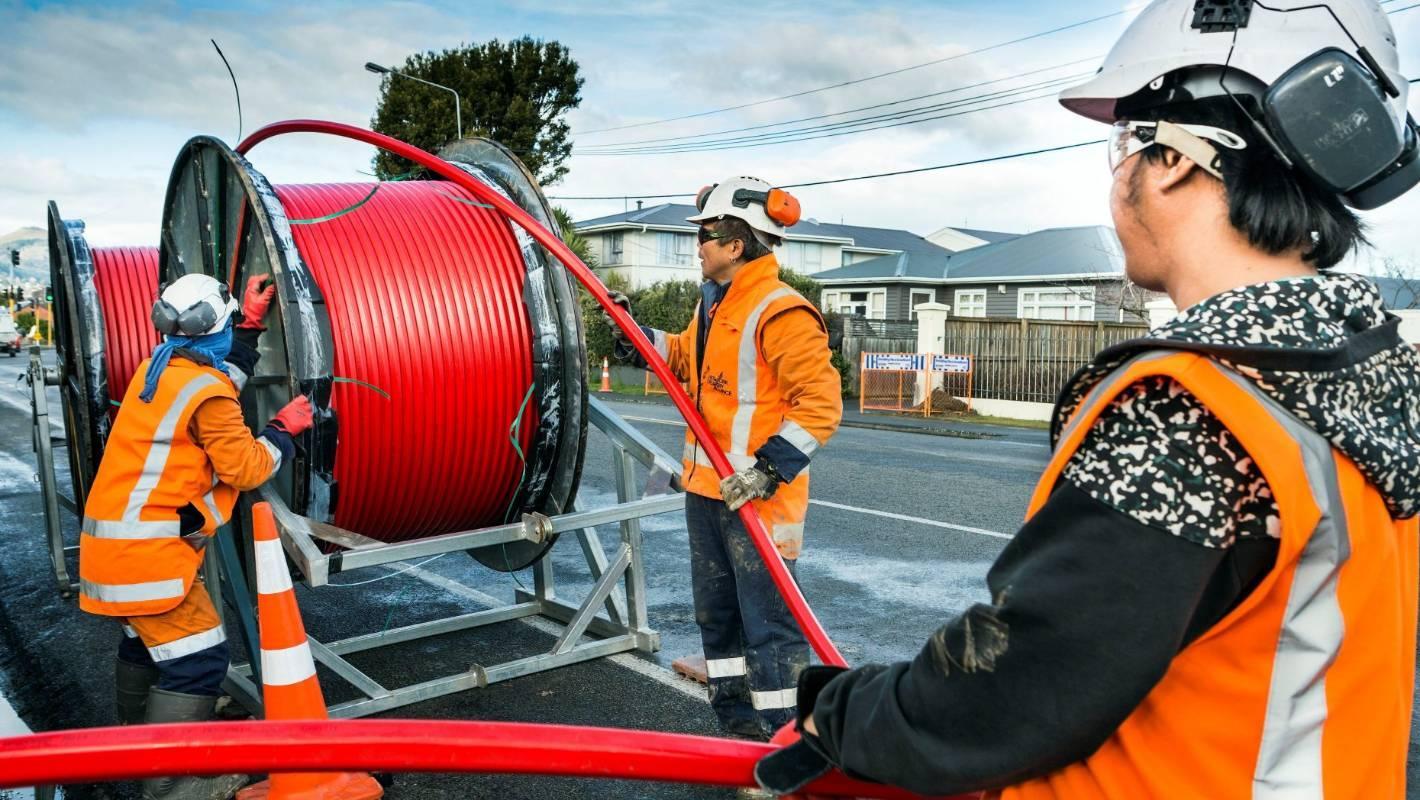Home » Global Services » Fibre Roll Out Services
Fiber optics technology is the backbone of network infrastructure and a way for new and existing technologies to communicate faster and with more bandwidth. Given the growth of data usage, extensive fiberization to create hyperscale full-fiber rollout networks cannot be ruled out. These hyperscale networks are envisioned to create superfast digital highways, accelerate the digital revolution, and connect billions of humans. With the impending network augmentation to 5G and industrial IOT, a massive fibre rollout upgrade will be required for the existing OFC network. Read More..
Hyperscale fiberisation requires an innovative approach.
There is a need to operate a reliable fibre network with minimal interruptions and sustained network quality with better availability. The multi-layered fiberisation projects are complex and are largely driven by unorganized players with unskilled labour, lack of proper planning, surveys, and the intricate right of way process.
We plan, design, deploy and manage high-capacity converged fibre and wireless networks.
We provide a robust fiber optic network-supported backhaul solution to deliver on the promise of seamless high-speed connectivity and increased reliability for an enhanced network experience. With expertise ranging from optical fibre and cables, hyper-scale network design, deployment, and network software, we are the industry's leading integrated fibre network solutions provider for global data networks. Read Less..


A turnkey project that STL designed, developed, and outfitted with all the necessary facilities, staged delivery, and 360-degree reliable fiber optic network operations with high efficiency.
A collection of tactics, equipment, techniques, and training courses for boosting the effectiveness of automated workflow orchestration and business processes.
Digital and modern tools like GPS, drones, LiDAR, street view, and GEP technical surveys in the cloud (ground penetrating radar) are used in fiber network solutions. For example, drone LiDAR surveying has a lot of potential because it can produce topographic surveys that are just as accurate as those made with conventional methods but in a lot less time and at a lot lower cost.
Up to 30% more work can be done with the help of STL Academy, which gives thorough training to both internal and partner resources.
A device for planning converged networks. The process of digitization turns a non-digital business process into a digital one by using technology to automate tasks that are done over and over again.
System for managing digital programs online. Businesses can get useful information from location-based data, map layers, and 3D modeling for fiber solutions with the help of a well-designed Geographic Information System (GIS).
Timelines for full fiber rollout execution that correspond with those for approval. To address the unique challenges faced by broadcasters, it's a one-stop-shop solution, with the delivery of work according to a standard cost and scale.
The total cost of fiber service ownership optimization Utilized the most effective equipment on the market to lower OPEX and optimize CAPEX while ensuring that the entire comminution circuit is constructed to be as efficient as possible.
For planning, design, building, and management processes, field and office teams can pinpoint problems like slow decision-making, slow communication, functional silos, and RoW (right of way) permissions from authority with a 360-degree view and unhindered access to network data.
Scale up to 10x for seamless fiber rollout and deployment capability. With platform and connection reliability, there is potential for nonlinear scaling.





The use of optical fiber to connect to the Internet is what we mean when we talk about fiber rollout. Telecoms would be able to offer next-generation internet services and fiber-optic network connectivity to numerous businesses thanks to the rollout of fiber. Unlike traditional copper data transmission, optical fiber data transmission uses a beam of light to send data through optical fiber glass cables. This lets data move at the speed of light and through optical fiber wires that are as thin as a human hair. Because of this, fiber broadband is the quickest way to get internet speeds of more than one gigabit per second.
A common name for a broadband optical fibre network architecture that provides all or a portion of the line used for the last mile connection to the user is "fibre to the x," or FTTx. FTTx is a general term for different fibre deployment configurations. Based on where the fibre ends, these fibre solutions or configurations are divided into categories.
Today, the phrases that are most frequently used are:
In order to provide a high-speed internet connection without any hiccups, fiber-to-the-home broadband, fiber solutions, also known as FTTH broadband, is installed. Here, a fiber optic cable connection is made from a central location to the specific residence, apartment, or building. FTTH broadband uses optical fiber in networking to connect directly to the user's home. For improved connectivity and user experience, optical fiber transmits data from various servers. FTTH is broadband that is specially designed to deliver better performance. Fiber optic cables run from a central office to an FDH, or fiber disruption hub, a NAP, or a terminal, which acts as a junction box, and then to the user's home.
A Fibre network that transmits data using light is provided by fiber infrastructure, also known as fiber-optic infrastructure. Light speeds up the transfer of data, and it also provides a reliable medium that is not affected by electromagnetic interference or other physical factors. Additionally, the fiber optic medium enables data transmission over long distances. What does all of this mean? Compared to traditional electrical transmission, users can get the information they want faster and with more reliability. Other transmission methods use copper wires, which can attenuate signals and distort them. There is no doubt that a fiber-optic infrastructure, i.e., the use of fiber-optic cable in networking, is a better choice for connections requiring high speeds, extensive bandwidth, or long distances.
Please wait while you are redirected to the right page...
